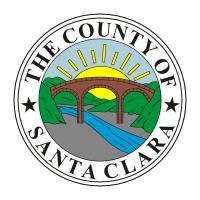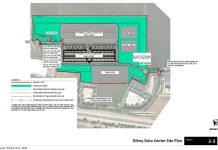The South County Reentry Resource Center—which offers a variety of services to help probation clients and others recently released from incarceration to reintegrate into society—will celebrate a grand opening at its new location at 8425 Murray Ave. in Gilroy later this month.
The center opened at its first location at the San Martin county government center on Highland Avenue in 2015 at the request of law enforcement and elected officials in both Morgan Hill and Gilroy.
Since then, county authorities have sought a location that is more accessible to the residents who are likely to use its available services. They found such a site at the new location, which is strategically positioned in the vicinity of other resources that former inmates—who may now be struggling with mental illness, substance abuse and financial difficulties—might need. Nearby is a VTA bus stop, as well as offices for Community Solutions, Social Services and the Gilroy Compassion Center.
“The idea is to provide services and assessments in Gilroy,” said Santa Clara County Director of Reentry Services Javier Aguirre. “Currently, a lot of folks on probation have to come to San Jose to see their (probation officer) and receive services, but we’re growing these services in South County.”
The new South County Reentry Resource Center will host a grand opening the morning of April 24, Aguirre said.
A similar reentry center has been open in San Jose since 2012. The South County center was initially requested by the police chiefs of Morgan Hill and Gilroy in late 2014, specifically in response to the abundance of inmates being released under the state law AB109. This law shifted responsibility for certain convicted felons from state to county authorities upon their release from jail or prison, and allowed some individuals to serve their sentences in county jails rather than state prisons.
Since 2011, 7,176 former inmates have reentered Santa Clara County under this law, known as “realignment,” according to the Office of Reentry Services’ December 2017 semi-annual report.
Santa Clara County Supervisor Mike Wasserman said the South County center is modeled on the one in San Jose, which he noted has gained high praise from state officials for its practices in helping clients get back on their feet and stay out of jail.
“The more convenient you can make it for people that use these services, the more likely they are to use the services,” Wasserman said. “Our reentry centers have made a huge reduction in the typical recidivism rate in Santa Clara County.”
Recidivism—the rate at which former inmates re-offend and go back to jail—has indeed dropped locally since 2011. Specifically, the recidivism rate among AB109 clients since 2011 has dropped 11 percent, from 56 percent before realignment to 45 percent after the law was established, according to another report from the office of reentry services. The recidivism rate among all felons—including those not impacted by AB109—has dropped from 46 percent to 36 percent in Santa Clara County since 2011.
County reentry services served more than 10,000 clients from 2011 to 2016, and about one-third of these are AB109 clients. These clients have enrolled in supportive housing, mental health treatment, substance abuse treatment, public benefits, faith-based services and other services offered or referred by the reentry centers in San Jose and Gilroy (and formerly in San Martin).
The vast majority of these clients are served by the San Jose center, but there are enough South County residents who qualify for the services that the Gilroy facility is expected to stay busy. Most of those in South County who qualify live in or near Gilroy, according to authorities.
Gilroy Mayor Roland Velasco—who serves on Wasserman’s staff—said it was a previous mayor and a previous police chief (Denise Turner) who had requested the relocation of the South County Reentry Center to Gilroy. He said current county officials did not consult with him or any other city officials before finalizing the move.
However, he supports the county’s effort to reintegrate convicted felons into the society in a productive way.
“I’m not a fan of AB109 or Prop 47 or Prop 57,” Velasco said, referring to two other state laws that have been criticized by law enforcement authorities for flooding the streets with more convicted criminals. “I want the re-entry center to be successful, providing services for referral to faith-based organizations, group therapy (and) drug and alcohol treatment.”
Correction: A previous version of this story incorrectly stated the South County Reentry Resource Center will provide services to parolees. The center, which is located in Gilroy, will not serve parolees, according to Santa Clara County Director of Reentry Services Javier Aguirre.
Post-release help center shifts to Gilroy
GILROY MAYOR SUPPORTS IT BUT WASN’T CONSULTED















